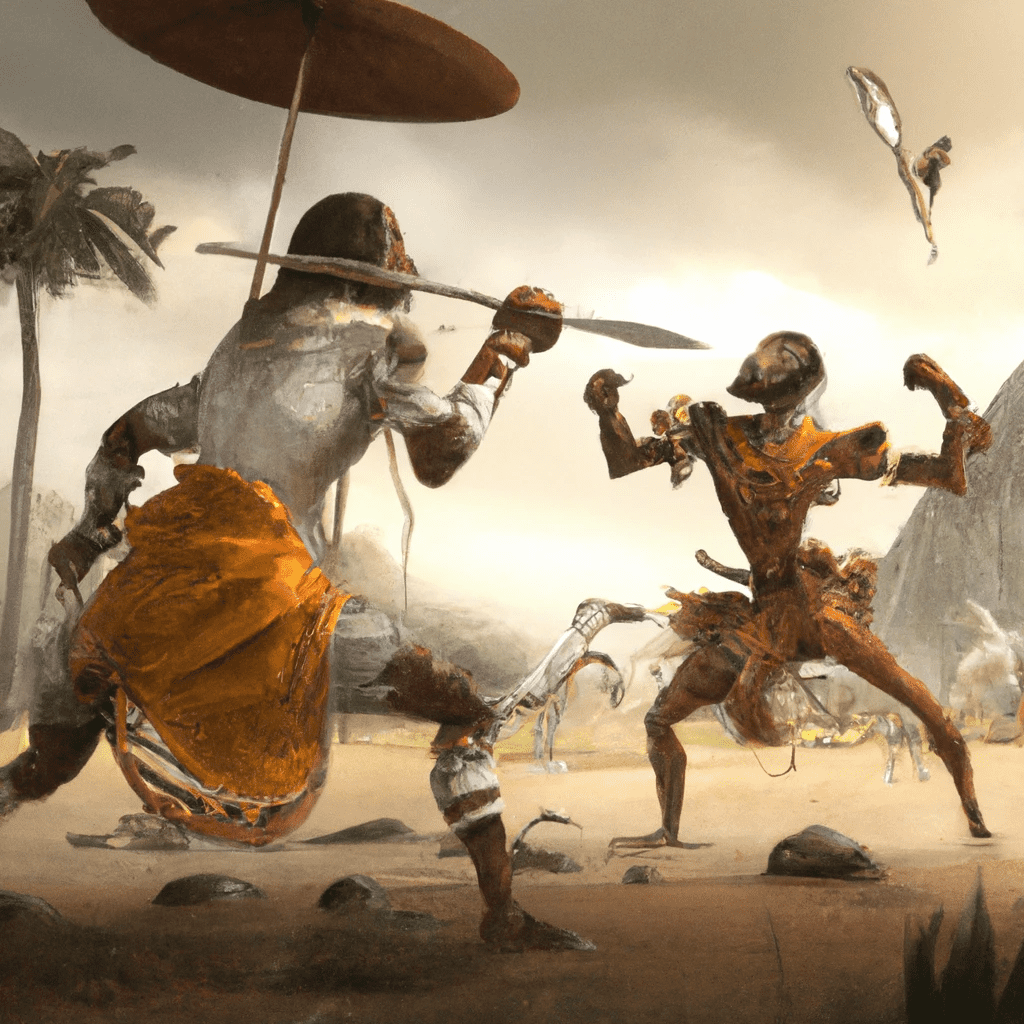The Vazimba are considered the earliest inhabitants of Madagascar, predating the arrival of Austronesian settlers. Although their origins remain a subject of debate, they’re often described in Malagasy oral histories. Over time, they integrated or moved to remote areas, leaving a rich cultural legacy.
Revered by the Malagasy as their first ancestors, are shrouded in mystery and intrigue. It is believed that their small stature set them apart from their contemporaries, igniting speculation that they may have been pygmy migrants hailing from the modern-day islands of Indonesia. This theory, although not proven, aligns with scientific evidence that confirms the arrival and settlement of humans on Madagascar during the period between 350 BCE–500 CE.
The legends and folklore surrounding the Vazimba are a vivid tapestry woven into the cultural identity of the Malagasy people, inspiring their beliefs and practices across the entire island. From the ethereal to the historical, these tales are cherished and passed down from generation to generation, fuelling a collective sense of pride and heritage. Their legacy is mirrored in other Austronesian cultures, such as the Menehunes of Hawaii, cementing their place as a timeless and mystical figure in the history of mankind.
The mystery of Madagascar’s earliest settlers continues to captivate the minds of scholars and historians. From the lush jungles of Indonesia, brave oceanic explorers embarked on a journey to the exotic island, braving treacherous seas and navigating unknown territory. The exact timing and details of this colonisation remain a subject of fierce debate and ongoing research. However, it is believed that there may have been multiple waves of early settlers from Southeast Asia, who shared a common language and culture.

When the second wave arrived, they were said to have discovered the island already inhabited by descendants of the first wave. These indigenous people had lived in isolation for centuries, adapting to their new surroundings and evolving their culture and way of life. According to popular belief, they were considered primitive compared to the second-wave settlers, lacking knowledge of metallurgy or rice farming, and wielding weapons made of clay. The arrival of Bantu-speaking settlers from East Africa brought their culture of zebu cattle herding, but the Vazimba were said to have continued herding their zebu without consuming them for meat.

The rich history of these early inhabitants of Madagascar’s highlands continues to unfold through a mix of archaeological research and oral histories. It is believed that upon their arrival, they practised tavy, a form of slash-and-burn agriculture, to clear the land for farming staples such as bananas, tubers, and ginger. They lived off the land, gathering honey, fruits, and edible seeds, and hunting small game in the dense forests. As their population grew, villages were established, ruled by chiefs, and later, kings. It is said that these rulers even dyed their hair red using a local mushroom, a tradition that still holds significance in many parts of Madagascar today, symbolising the connection to their rich and storied past.
The fabled first settlers of Madagascar, have been categorised in the island’s rich oral history according to where they are said to have made their homes. The vazimba andrano, or “Vazimba of the Water,” are thought to have lived near rivers and lakes, embracing the life-giving flow of water as their primary source of sustenance. Meanwhile, the vazimba antety, the “Vazimba of the Soil,” are said to have been the most widespread of the early settlers, inhabiting the fertile Betsiriry Valley in the central Highlands. Lastly, the vazimba antsingy, the “Vazimba of the Tsingy,” are said to have made their homes in the mysterious limestone caves of Bemaraha, where they subsisted on the fruits of the forest. These intriguing accounts of the early settlers offer a glimpse into the diverse lives they may have led in the early days of Madagascar’s settlement.
The rise and fall of Vazimba
The Vazimba period, the first chapter in Malagasy oral history, is a nostalgic tale of the initial settlement of Madagascar by oceanic explorers from Indonesia. These brave people, who spoke the same language and shared the same culture, established powerful kingdoms ruled by queens in the central Highlands region. Andriandravindravina, the first Vazimba sovereign of the central highlands, was revered as a legendary figure.
However, the peaceful Vazimba era was short-lived as the Merina sovereigns swooped in and conquered the Vazimba Highland kingdoms. The half-Vazimba Merina king, Andriamanelo, together with his successors Ralambo and Andrianjaka, were credited with forcing the Vazimba out of the Highlands and into western Madagascar. Although it was widely believed that the last of the Vazimba were exterminated during the reign of Andrianjaka, there is evidence to suggest that many Vazimba chose to assimilate into the Merina culture instead.

The oral history of the Merina and Betsileo families speaks of the union between Merina and Vazimba ancestors, and it is speculated that the hunter-gatherer Mikea peoples and the Vezo fishing tribe along the western and southern coastline of Madagascar may be descendants of the Vazimba. The Vazimba period is a testament to the bravery and resilience of these early settlers, and their legacy lives on in the vibrant culture of Madagascar.
Related Posts
Sources
“Vazimba: The Mysterious Prehistoric Inhabitants of Madagascar.” WLUDH 100: Digital Humanities Perspectives. Accessed February 9, 2023. http://www.wludh.ca/dh100/2015/Afr/Vazimba/origin/
“Vazimba.” In Wikipedia, The Free Encyclopedia. Accessed February 11, 2023. https://en.wikipedia.org/wiki/Vazimba.





